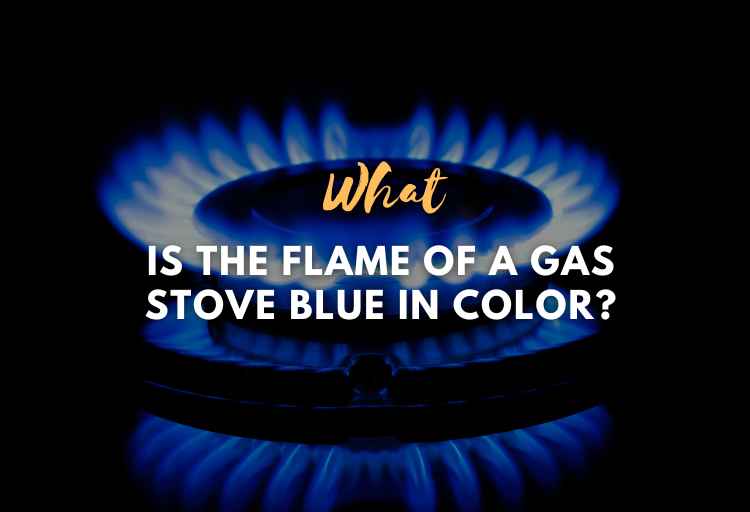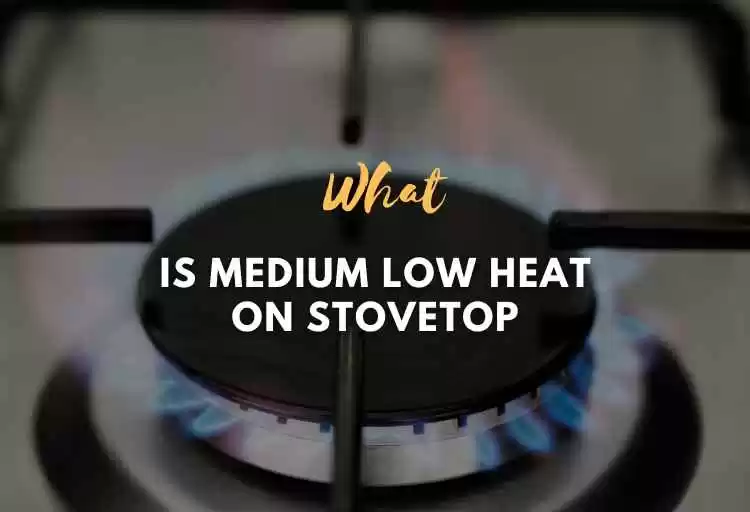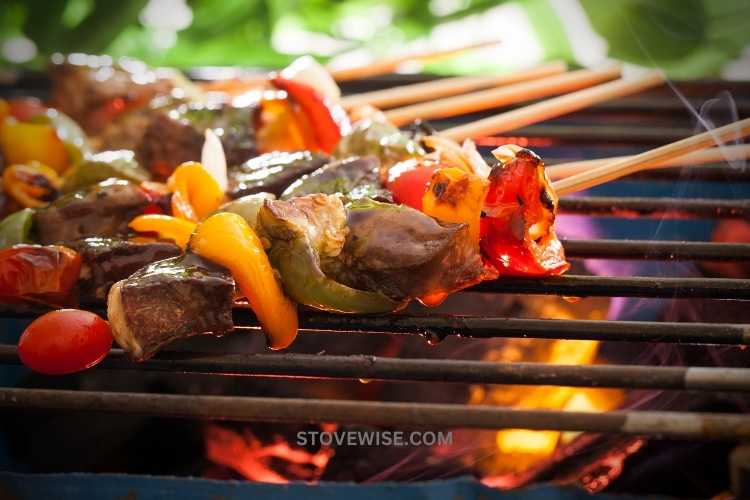Why is the Flame of a Gas Stove Blue in Color?
A gas stove is an essential appliance in every modern kitchen. It is convenient, efficient, and easy to use. But have you ever wondered why is the flame of a gas stove blue in color?
The flame of a gas stove is blue in color due to efficient combustion. The blue hue signifies the complete burning of methane in the presence of sufficient oxygen, emitting blue-violet light. An adequate oxygen supply ensures minimal production of soot, resulting in a cleaner and safer flame.
In this article, we will explore the science behind the blue flame and why it is important for your gas stove to have a blue flame.

Contents
What is a Gas Stove Flame?
Before we delve into the science behind the blue flame, let’s first understand what a gas stove flame is. A gas stove flame is the visible part of the combustion process that occurs when natural gas or propane is burned. The flame is created when the gas mixes with air and is ignited by a spark or a pilot light.
A gas stove flame is the visible manifestation of a controlled combustion process that occurs when natural gas or liquefied petroleum gas (LPG) is ignited in the presence of oxygen. Gas stoves are a popular choice for cooking due to their efficiency and ease of use.
Combustion Process
The combustion process in a gas stove involves three key components: fuel, oxygen, and heat. Here’s how it works:
- Fuel: The fuel used in most gas stoves is either natural gas (mainly composed of methane) or LPG (a mixture of propane and butane). These gases are highly flammable and can be easily ignited with a spark or a pilot light.
- Oxygen: Air contains about 21% oxygen, which is necessary for combustion. When the gas is released into the burner, it mixes with the surrounding air, creating a combustible mixture.
- Ignition: When you turn on the stove knob, the gas valve opens, allowing the gas to flow through the burner. As the gas comes into contact with the pilot light (in older stoves) or an electric igniter (in modern stoves), it ignites, starting the combustion process.
Appearance of the Flame
Once the gas is ignited, a flame is produced, which emits heat and light. The appearance of the flame can vary depending on factors such as the gas-to-air ratio, the type of gas used, and the stove’s design. Here are some common characteristics of a gas stove flame:
- Blue Flame: A well-adjusted gas stove flame is typically blue in color. This indicates efficient combustion, where the gas is burning completely, and enough oxygen is present. The blue color comes from the blue-violet light emitted by the reaction.
- Yellow or Orange Flame: If the flame appears yellow or orange, it may indicate an incomplete combustion process. This could be due to a poor gas-to-air ratio, a clogged burner, or inadequate air ventilation. A yellow flame can produce soot and carbon monoxide, which is potentially hazardous.
- Low Flame vs. High Flame: The height of the flame can be adjusted using the stove’s control knob. A low flame setting releases less gas, while a high flame setting releases more gas. Adjusting the flame intensity allows for precise temperature control during cooking.
It’s essential to ensure that your gas stove is well-maintained and that the flame burns blue to promote efficient and safe combustion. If you notice a yellow or orange flame, it’s advisable to have the stove inspected and serviced by a qualified technician to address any issues that might affect its performance and safety.
Why is the Flame of a Gas Stove Blue in Color?
The blue flame of a gas stove is caused by complete combustion. Complete combustion occurs when the gas and air mix in the correct ratio, and the flame burns at a high temperature.
When natural gas or propane burns, it produces carbon dioxide, water vapor, and heat. However, if there is not enough oxygen available for the gas to burn, incomplete combustion occurs, and the flame turns yellow.
This happens because the gas is not burning efficiently, and carbon monoxide is produced instead of carbon dioxide. Carbon monoxide is a toxic gas that can be dangerous if inhaled.
Why is the Blue Flame Important?
The blue flame of a gas stove is important for several reasons. Firstly, it is an indication that the gas is burning efficiently and completely. This means that there is enough oxygen available for the gas to burn, and carbon monoxide is not being produced.
Secondly, the blue flame burns at a higher temperature than the yellow flame. This means that it is more efficient at transferring heat to your cookware, which results in faster cooking times.
Thirdly, a blue flame is safer than a yellow flame. A yellow flame indicates that incomplete combustion is occurring, which can lead to the production of carbon monoxide. Carbon monoxide is a colorless, odorless gas that can be deadly if inhaled.
How to Ensure Your Gas Stove Flame is Blue?
Now that you understand the importance of the blue flame, let’s explore how you can ensure that your gas stove flame is blue.
Clean Your Burners
Over time, the burners on your gas stove can become clogged with food debris and grease. This can affect the flow of gas and air, which can result in an uneven flame or a yellow flame.
To ensure that your gas stove flame is blue, it is important to clean your burners regularly. You can use a toothbrush or a wire brush to remove any debris from the burners.
Adjust the Air Shutter
The air shutter is a small metal plate located near the base of the burner. It controls the amount of air that mixes with the gas before it is ignited.
If the air shutter is closed too much, the flame will be yellow. If it is open too much, the flame will be too high and noisy.
To ensure that your gas stove flame is blue, adjust the air shutter until the flame is steady and blue. You can use a screwdriver to adjust the air shutter.
Check the Gas Pressure
If the gas pressure is too low, the flame may be yellow or uneven. To ensure that your gas stove flame is blue, check the gas pressure using a manometer. If the pressure is too low, contact a professional to adjust it.
Replace the Burners
If your burners are old or damaged, they may not be able to mix the gas and air properly, resulting in a yellow flame. To ensure that your gas stove flame is blue, consider replacing your burners.
Conclusion
The blue flame of a gas stove is a result of efficient and complete combustion. It is important for your gas stove to have a blue flame because it indicates that the gas is burning efficiently, it is more efficient at transferring heat, and it is safer than a yellow flame.
To ensure that your gas stove flame is blue, clean your burners, adjust the air shutter, check the gas pressure, and replace the burners if necessary.






